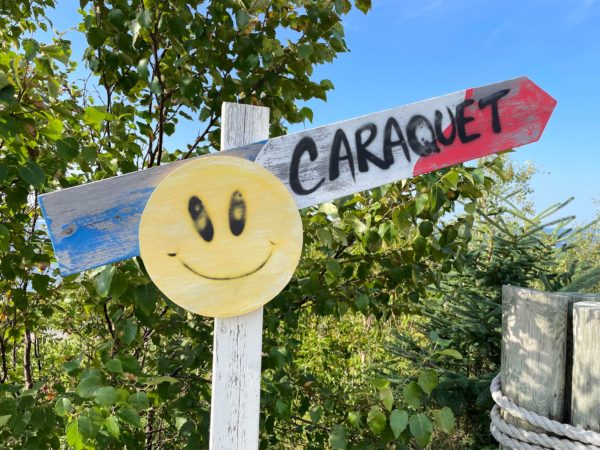
I’ve been hearing about Caraquet, New Brunswick, my whole life. My mom’s family (ok, the men in my mom’s family) made their living fishing in the Caraquet area for 8 generations. During the Great Depression, jobs dried up and people, including my ancestors, were struggling to find work. My grandfather Ferdinand (‘Fred’) Murray moved his wife, Marie-Louise (Godin) and the first 7 of their kids (of the eventual 13) to Berlin, New Hampshire, where the paper mill was hiring. The rest is history…
My mom, who was born a few years after the move to NH (she was #12), visited Caraquet once, just before she married my dad in 1955. All she remembers is poverty and dilapidated houses all lined up on one street, and the fishing boats that smelled like fish. Despite the tradition of large families, she spoke of meeting just one aunt on her visit, and my mom never returned.
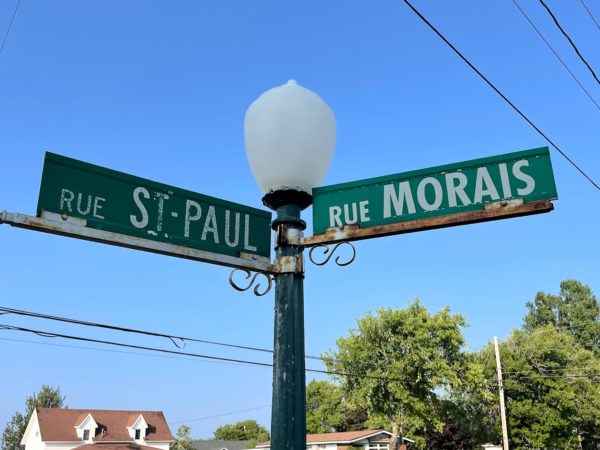
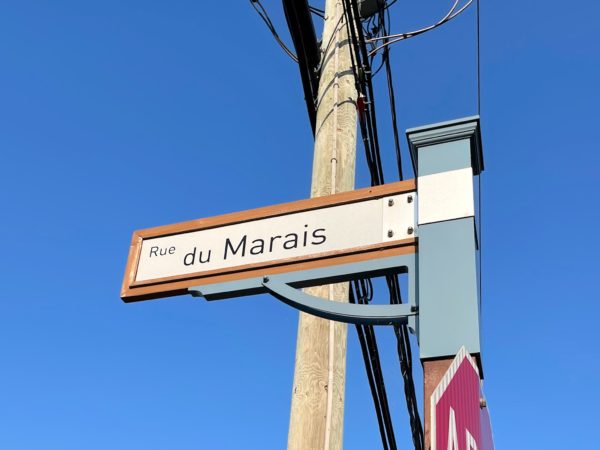
There is a Godin Road/Chemin in Caraquet. I didn’t find it while there as I searched for Godin Street/Rue…
Visiting Caraquet has been a life-long e-pushpin for me (yes, even before there were e-pushpins).* I had no expectations about the town, and I didn’t have much of a plan. However, I did have genealogy listings of my mom’s maternal and paternal lineages developed by my dad’s uncle Orad. He found a common ancestor and had already done much of the research on both sides of my family. And he liked genealogical research…
He traced the Godin* family back to Pierre from France who married in 1654 in Montreal. There was a slight gap in the research 1736-1762, then a continuous listing of the family genealogy living in Caraquet.
The Murray family went back to Louis Morais, originally from France who married in Quebec in 1729. His son, Jacques Morais, moved to Caraquet in 1784 having received a land grant from the New Brunswick government. The research indicates that Jacques’ oldest son, also named Jacques, later went by the name Jack Murray. Jack’s sons also used the name Murray, and this anglicized name was passed on down the family line. Although there’s no documentation of the reason, we’ve always assumed that during challenging times for French-speaking people of New Brunswick an English-sounding name could make things easier.
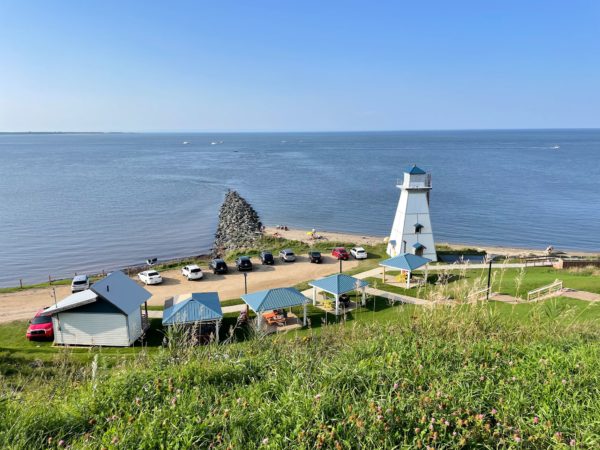
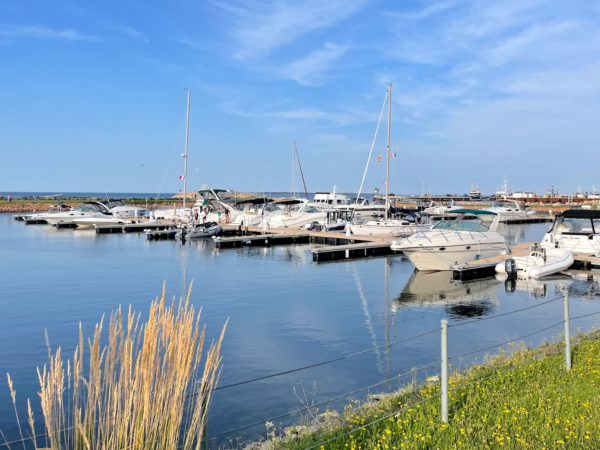
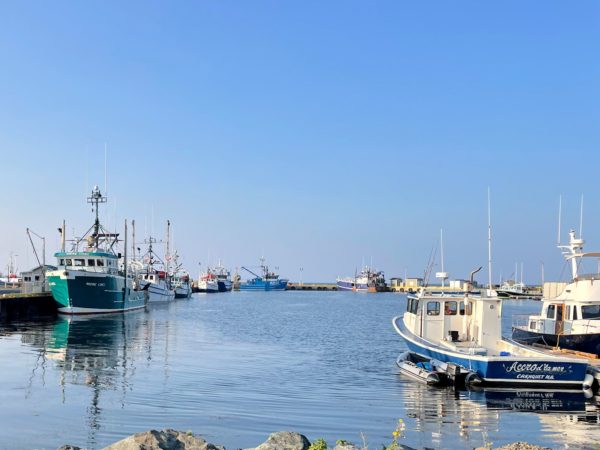
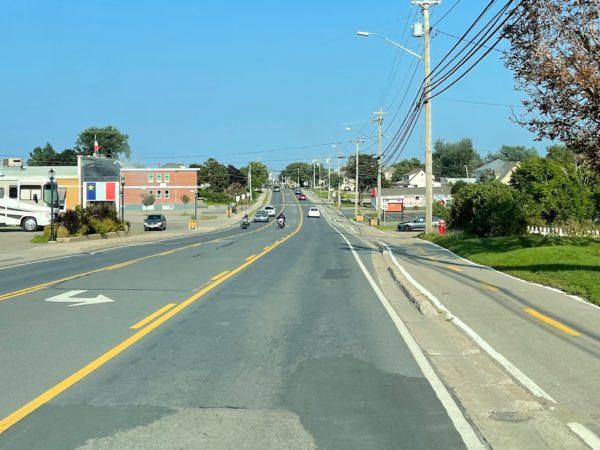
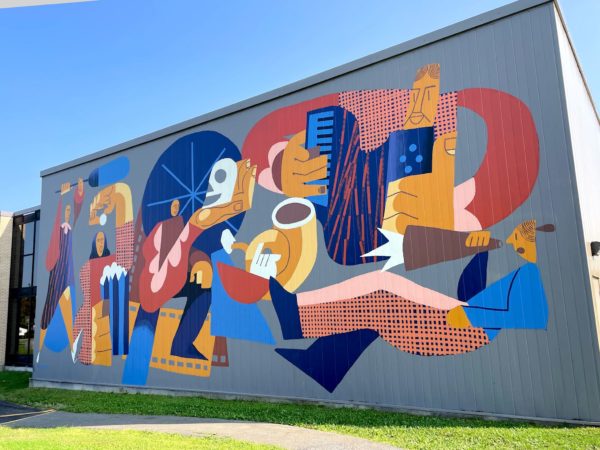
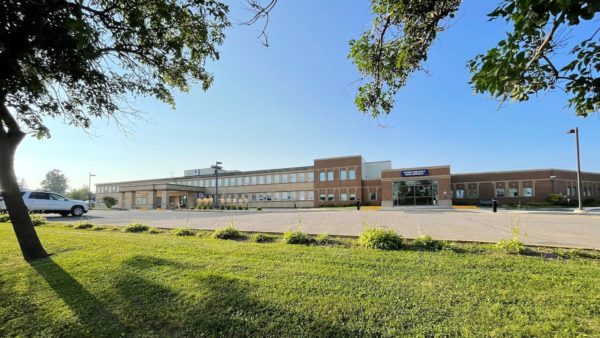
As we crested a hill and dropped into Caraquet (population 4200), we were amazed! If it wasn’t for the hospital blocking the view where highway 11 met St Peter Boulevard, we would’ve had a million dollar view of the Baie des Chaleurs (Bay of Warmth). We stopped at the busy town visitor center with that million dollar view just west of the hospital and were given a map with 50 attractions on the list of places to visit, 24 restaurants, bike paths, walking tours and 2 free places to park an RV overnight. Um. Wow. Caraquet has come a long way!
We started with the walking path through town around dinner time. Just east of the hospital is the commercial wharf, the large number of working boats -lobster, crab and shrimp – coming and going making it clear this is still a fishing town. Yet nearby were walking paths with lots of comfortable places to sit and take in the view along the way. The waterfront restaurants were hopping with ample outdoor seating on a beautiful evening. Caraquet appears to have a significant artist community – there’s art everywhere!
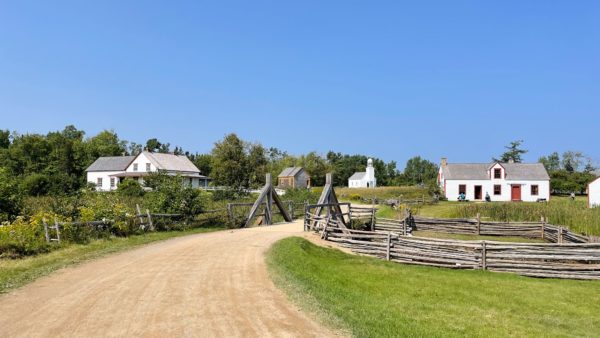
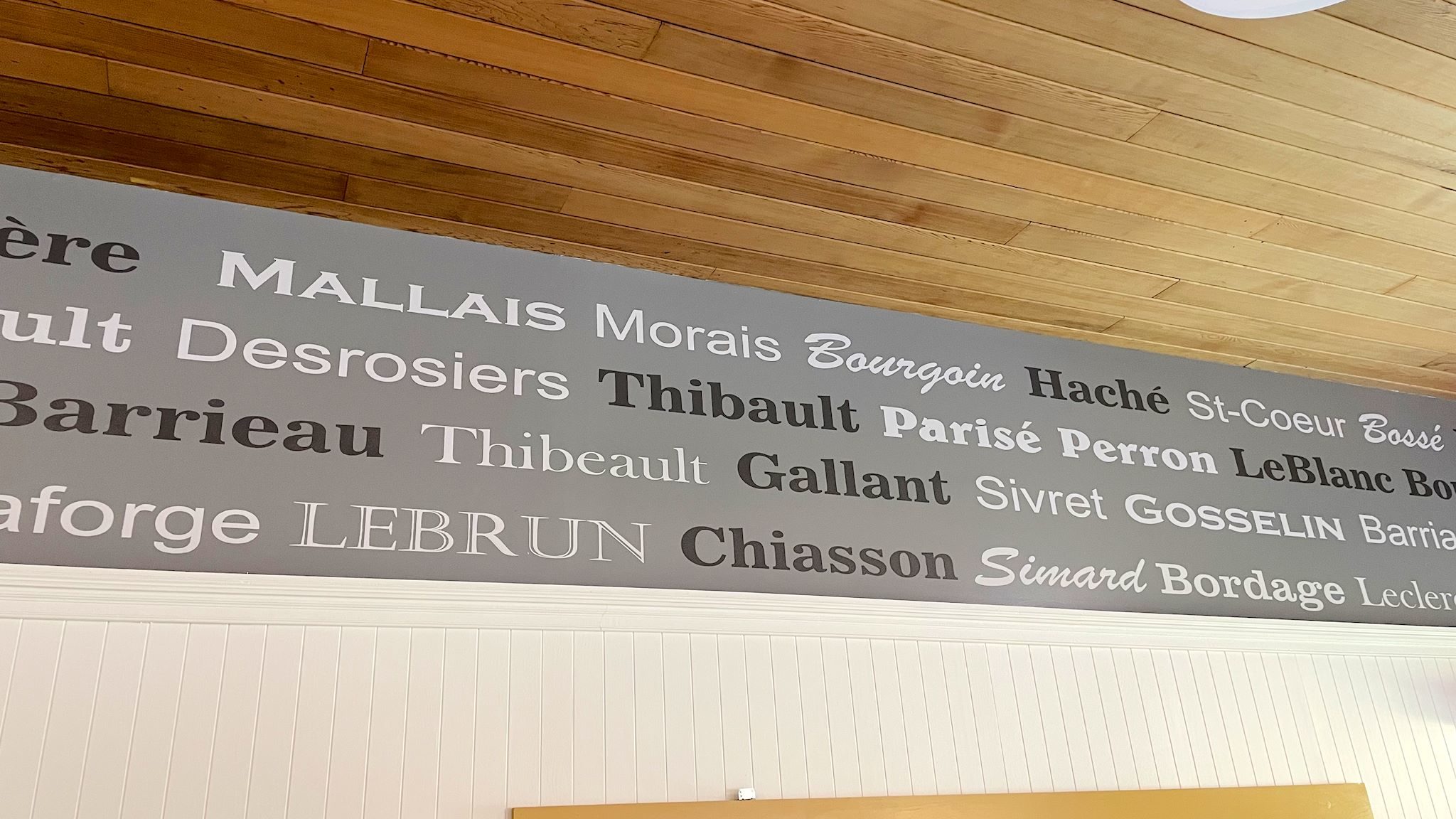
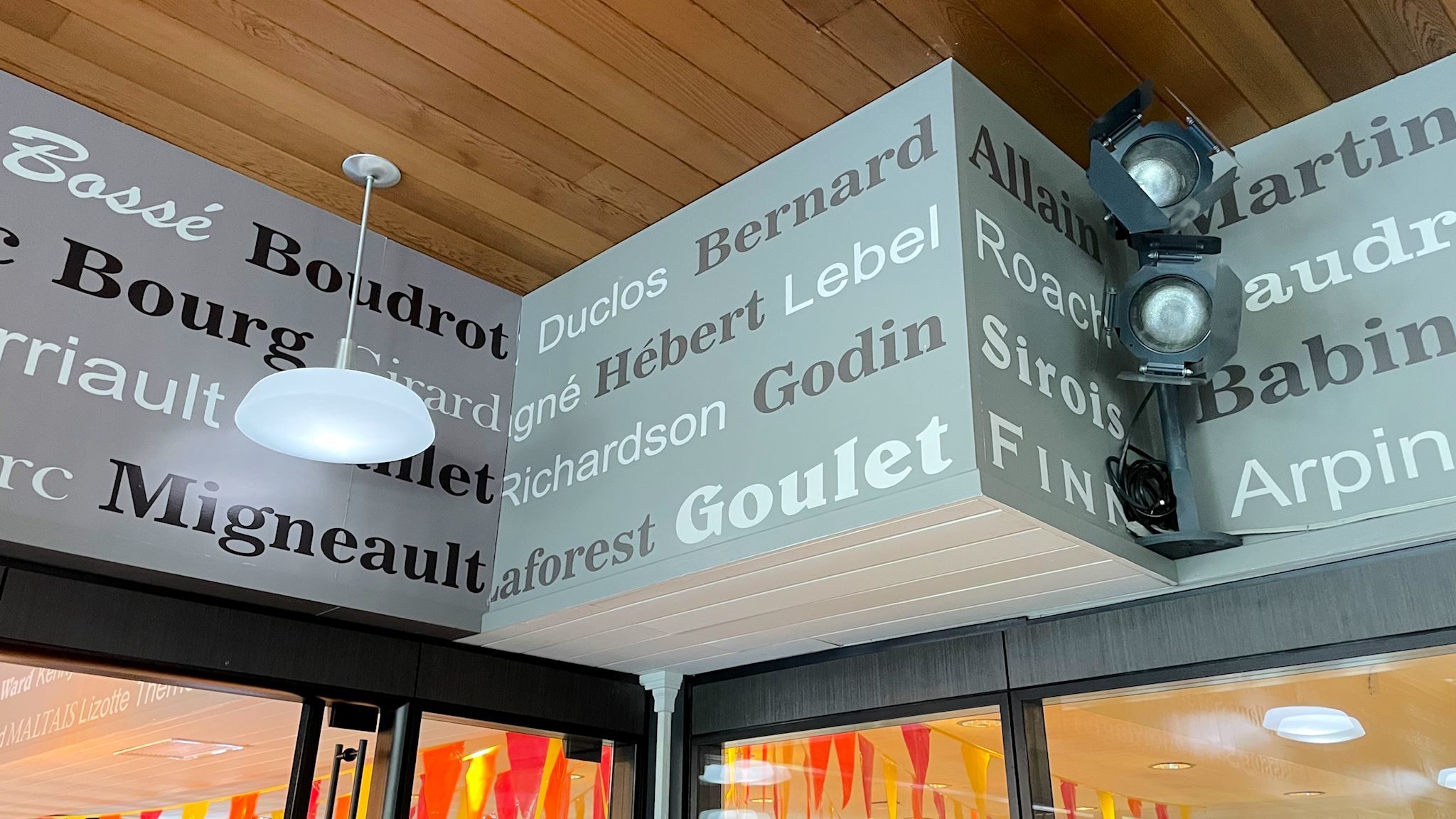
In Bertrand NB, just outside Caraquet, is the Historic Acadian Village, an Acadian answer to Colonial Williamsburg in Virginia. It was incredibly well done, fascinating and eye opening! Just off the entrance was a room with the family names of the Acadians deported by the British in 1755 to ports down the east coast of the US, including Louisiana – the start of the community known as Cajuns. Both Morais and Godin were on the list. In fact, the list of names read like my high school year book. Wait, what!? We’re Acadians? Yup. This was an unexpected revelation for me. And that was just the first exhibit…
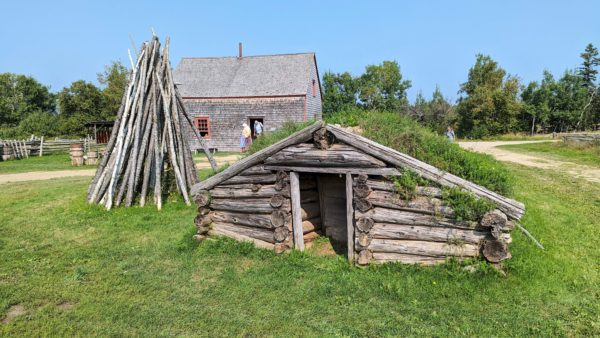
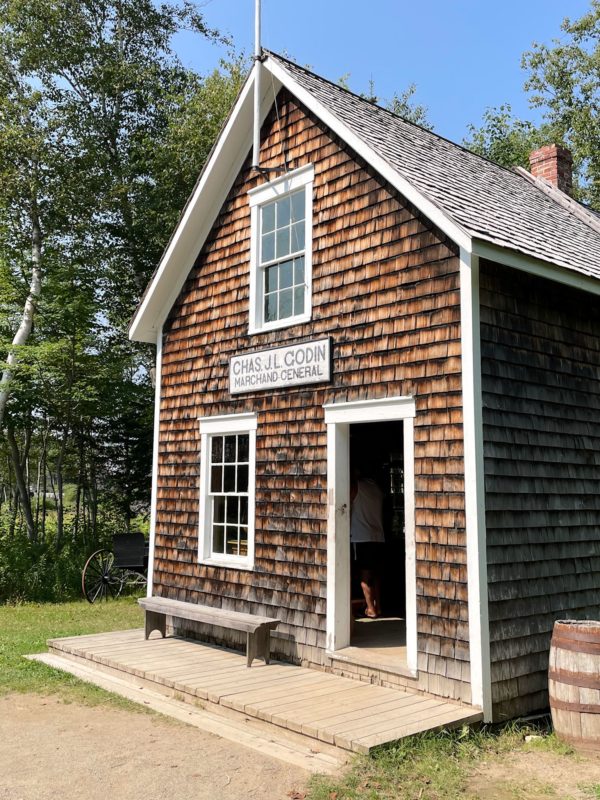
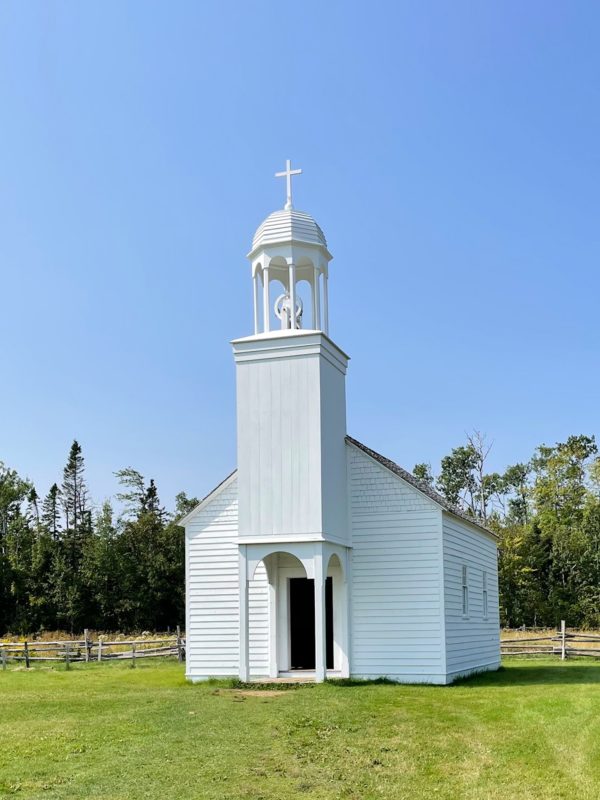
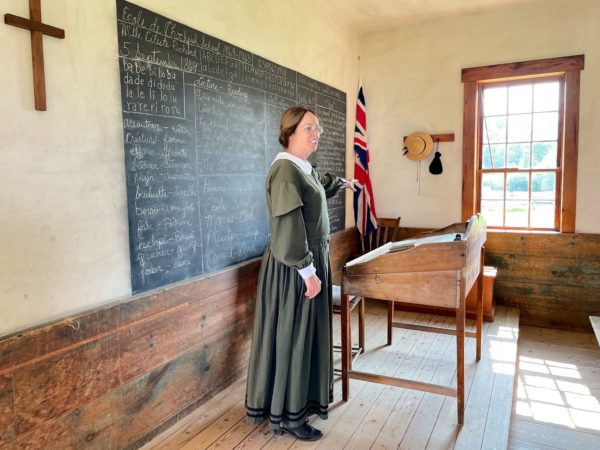
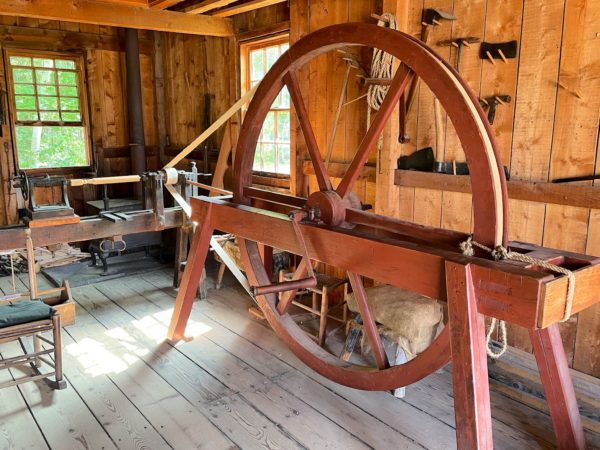
To create the historic village, a selection of standing houses, barns and other structures representative of a variety of dates in the 18th and 19th centuries were identified throughout New Brunswick, bought, disassembled and reassembled on the grounds. A detailed history of each structure and its owner for a specific period was researched. Historians/interpreters in period costume then demonstrated life during the specific period. Fascinating!
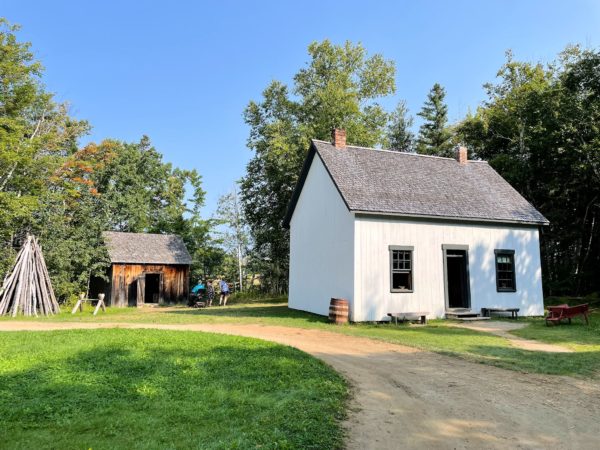
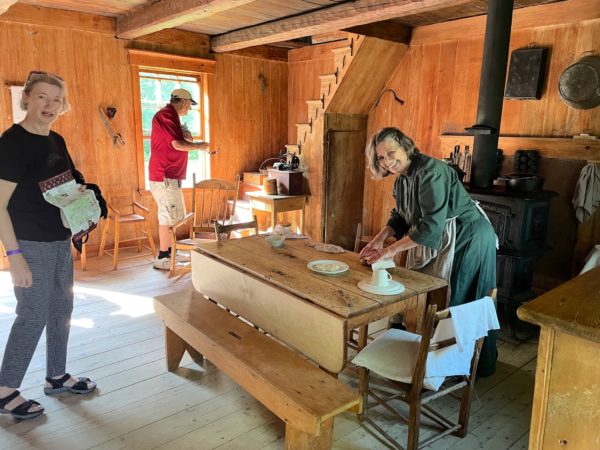
The third house we visited in the village hit home – this was the Godin home from 1890. The owner was Edouard Godin (not my direct ancestor, however likely somewhere in the family). He and his wife raised 5 children in this 2-bedroom home typical of the time and place. My grandmother, Marie-Louise Godin, was born around 1896 so she likely lived with her 6 siblings and parents in a similar house until she married my grandfather in 1912. What a visual!
The historians/interpreters were knowledgeable and glad to answer questions. My first question was if the Acadians were deported in 1755, how did my Acadian ancestors wind up in Caraquet in 1784? The deportation ended in 1764 and Acadians were allowed to apply for land grants to return. Ah, so that explains Jacques’ land grant and return to Caraquet. It also likely explains why the Godin’s moved to Caraquet in the 1780’s. I asked what was known about the later exodus in the 1930’s that affected my mother’s family, when so many went to the States in search of work. Though they had to break character to answer this, they could confirm that the Great Depression also decimated the families of New Brunswick as many left and never returned. None knew of anyone named Murray currently living in Caraquet, though many Morais and many Godins remain. Both Marie-Louise and Fred died when I was young. I never heard them talk about his 6 and her 6 siblings, and my mom doesn’t know about them either. What happened to my family may remain a mystery, however I’ve become interested the history of us Acadiens and I’m going to find out more.
For anyone who’s interested, more Caraquet and Historic Acadian Village pix…
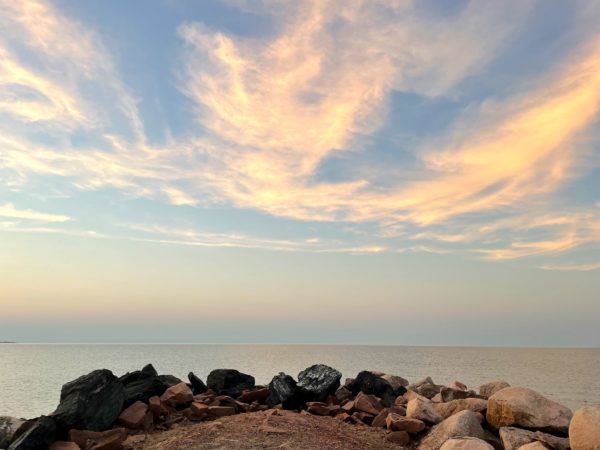
*Addenda
I heard from both my brother as well as a cousin, Ann. It appears we visited Caraquet on a family trip when I was a teen. Considering how much I love to travel and how little we traveled when we were kids, I’m surprised that I have no recollection of visiting Caraquet. I’m blaming it on raging teenage hormones…
I heard from Kim (of Kim and Chris we met in Newfoundland) that there are Godin’s in her family tree. After a bit of research, it turns out, the earliest Godin settler in Canada in the 1600’s is a common ancestor. Our respective branches of the tree split in the 1660’s. Tiny Planet!

Hi Sue and Doug! Just catching up on your blog. That is so cool looking for your roots. I’m also of Acadian decent. I have a booklet of genealogy that contains my paternal grandmother’s side (Nana’s sister had it done and my mother recently gave it to me). We are in Hanover, NH now, but I will have to look when I get home if any of those surnames are in my book too . We should compare notes. I hope you guys have a wonderful rest of your trip. We are heading home for two days after here then away until Oct 8.
Cool! Agree we should compare notes. Maybe we’re related! We should be home at about the same time…
Cuz! Pierre Godin who originally settled in Canada in the early 1600’s is a common ancestor, as well as one of his sons, Gabriel. Our respective branches in the family tree split from there in the 1660’s. How cool is that?!?!
Godin street is in Bertrand actually at the beginning of the village. Tiny road with I think 4 houses only and owned by the Thériault family. It’s my dad, Jean-Pierre Godin and my aunts, uncles and grandparents that was living that area there……I still have an old paper property of the land and how much it was paid. Euzebe Godin
Hi Euzebe! Thanks for stopping by! Next time we’re in Caraquet, we’ll have to find Godin Street… My grandmother was Marie-Louise Godin and her father was Charles Godin, descended from Pierre in 1654. Perhaps we’re related!?